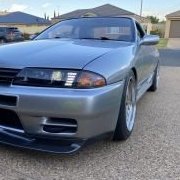4 Channel Blaupunkt Vr504 Velocity Reference Amplifier
Announcements
-
Similar Content
-
Latest Posts
-
Seconding Taipan. Either alternator is worn out, and dieing, or you've added some hectic load and it can't keep up. Also, you say "the fuel pump wiring is handling 20amp", how do you know? Have you put a current meter inline? The fuel pump will be wanting 20amp at a set load, at a set voltage, as that load, is what pushes the resistance electrically for the fuel pump (an unloaded electric motor, in theory draws zero amps). Now if you've got the load, but less volts, you've got less amps, which means less torque, so the pump won't run as quick. Add in, all wire has resistance, if you get 0.25ohm resistance in your wire in total, and run 20amp through it, you have 4v drop in the wiring alone. That means on a 12V supply, your pump now only sees an 8V potential across it, not the preferred 12V. If your pump is meant to draw 20a at 12V, that gives it an impedance of 0.6ohms, add in another 0.25ohms, in wiring, and realistically, your pump is now only actually getting 14amps, at about 8.4v... Let's say wiring is perfect, and we expect 14.4V output from the alt, and that is giving you your 20amp pull. Then your pump has an impedance of 0.72ohm. now let's say your alt is cactus, and only giving 13V out, now we've dropped to 18amps. If we claim flow to be linear as we alter voltage, then we've lost 10% of your flow. The above is to indicate, unless you've measured current, you've no idea what it's really getting, only what it's rated for at a given voltage. Shove a multimeter at the battery positive with one prob, and then on the positive feed into the fuel tank with he other probe, check out what the DC voltage is. That alone is giving you your voltage drop from battery to fuel tank lid.
-
Here’s how it is in the ECU and the wiring in the plug is like this think it is plain white, yellow, green, blue.
-
You will need custom pistons made, the combustion chamber is to modified for any off the shelf piston to give a good compression ratio
-
Which is a thing done by no-one ever. Not even remotely a good idea. I would run an engine with 10:1 these days. Good management and fuel compared to the early 90s when these boat motors were designed & built.
-
I think you misunderstand. This was Greg driving from Melb to Syd (or return) at a constant 100km/h on the highway. Very little throttle movement, very little accel/decel. You should be able to get 8.5 l/100km under those circumstances (which is effectively what he reports - 50L for 600km is 8.3 l/100km). I drive my car to & from work every day, in traffic, on a mixture of 50, 60, 90 km/h roads (and therefore at up to 110km/h!!) with traffic lights and freeway sections. 28 km each way, so about a 30-40 minute drive depending on day, direction and traffic (which is enough for the majority of the drive to be "fully warmed up". I typically get flat 10 l/100km every single week. OK, maybe 10-10.5, every single tank of fuel. RB25DET Neo. It is easy to get acceptable economy. I won't say "good" economy, because modern cars are doing 5-6 l/100km in the same conditions.
-





Recommended Posts
Create an account or sign in to comment
You need to be a member in order to leave a comment
Create an account
Sign up for a new account in our community. It's easy!
Register a new accountSign in
Already have an account? Sign in here.
Sign In Now